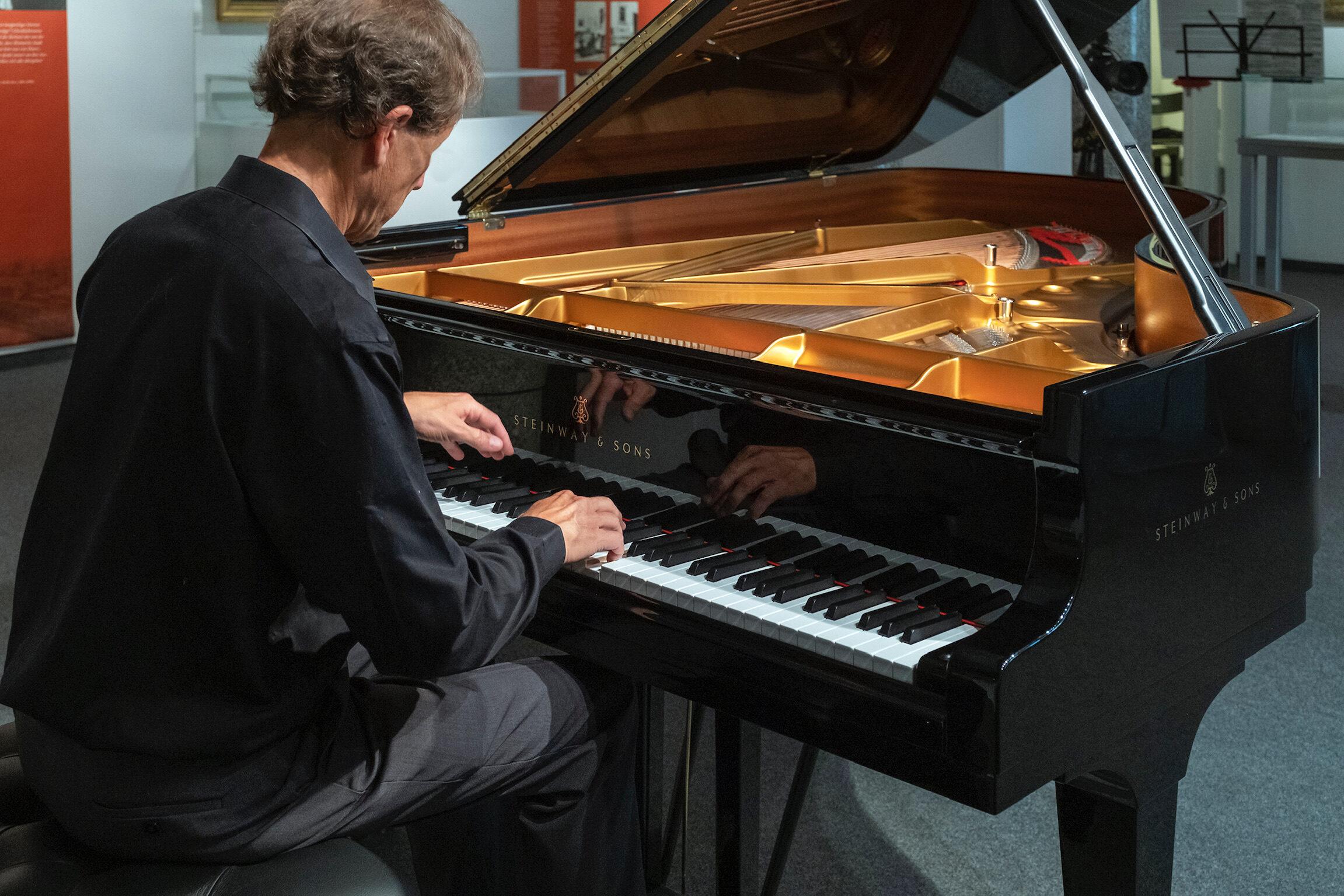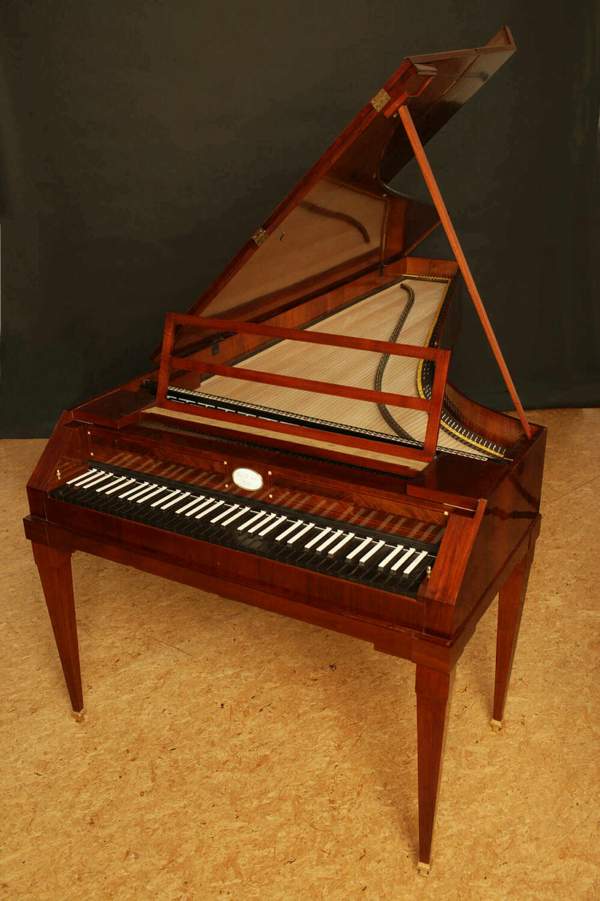
Ludwig van Beethoven came on the heels of Wolfgang Amadeus Mozart and Joseph Haydn. Those great composers had reached the peak of their expression, and music — all arts, in fact — needed to move along to the next thing: Romanticism. And Beethoven used that to revolutionize the symphony.
Something else was changing, too: the piano.
By the time Beethoven wrote his later works the number of keys on the piano had expanded. An octave (12 notes) was added to the upper keys. Listen to the high notes from his Waldstein Sonata.
And then there were five added lower notes as you can hear in his last Sonata, No. 32.

An 1805 Fortepiano recreation. Notice no foot pedals and the key colors are reversed!
The pedal on the piano evolved, too, first in England, then in Vienna. The right-most pedal, called the sustaining pedal today, allows the sound to ring — sustain — no matter what the hands are doing on the keys.
Early on for Beethoven, that function was controlled by the knee. It moved to the foot later in his life, as instruments got bigger (and as they got their own legs!).
Beethoven didn’t make these changes happen, but he was an encourager. He wanted a “louder” piano. Yes, he was losing his hearing, but he was also writing challenging music. And he broke a lot of pianos, too, by pounding away at them.
The piano in his day was called a fortepiano. It was flimsy and made of wood. Since it didn’t have legs, it rested on a trestle so you could easily move it around. And you couldn’t get a lot of sound out of it.
In 1796, when he was 26, Beethoven wrote to a piano manufacturer, complaining, “One often thinks that one is merely listening to a harp.”
Here’s how it sounded:
The development over the next 30 years was striking, but with complicated twists and turns. English piano manufacturers started making instruments with a bigger sound, but at a cost. The action was stiffer; it was harder to press down the keys.
In spite of their loudness advantage, Beethoven preferred the lighter action of the Viennese instruments; he thought the English pianos were unplayable.
He said soon before he died, “The piano is and remains an inadequate instrument.”
The modern instrument, with its grand piano sound, began with a patent in 1825, two years before Beethoven died. It was for a one-piece inner metal frame. This would make the instrument much stronger, allowing for more tension on the strings, thus more volume.
The piano needed to get louder. Audiences were getting bigger. In Beethoven’s time, you might have hundreds of people in attendance. Today, there are thousands in huge concert halls. Would Beethoven like it? Who knows. Huge sound -- great; stiffer action—maybe not.
Thanks to David Korevaar, Distinguished Professor in the College of Music at the University of Colorado Boulder; and Lambert Orkis, Principal Keyboard, National Symphony Orchestra, Washington, D.C. Piano history found in William S. Newman's "Beethoven's Pianos versus His Piano Ideals" (Journal of the American Musicological Society, 1970)
2020 marks 250 years since the birth of Ludwig Van Beethoven and CPR Classical celebrates!
On CPR Classical every weekend Oct. 9 - Dec. 13: Fridays at 12:30 p.m., Saturdays at 6 p.m. and Sundays at 4 p.m.








